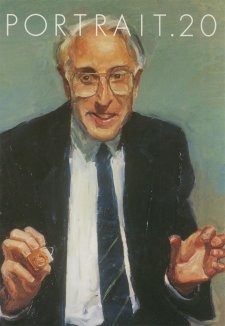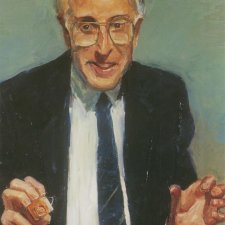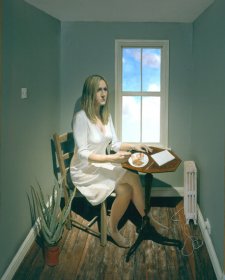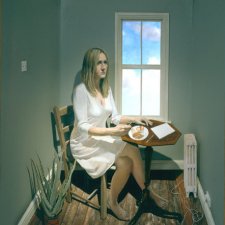In April, I gave a talk at the National Portrait Gallery comparing two great Australian-raised divas- Dame Nellie Melba and Frances Alda. Luckily, we were able to show to the audience that evening the gallery’s most recent acquisition, the dramatic photo portrait of Alda taken in New York in 1918 by the Metropolitan Opera’s principal photographer, Herman Mishkin.
Whilst Melba is well known to Australians, one of the nation’s icons, Alda has been substantially forgotten. Yet she was one of the world’s greatest sopranos, sufficiently outstanding to have been blocked early in her career by Dame Nellie. Both were brought up in Melbourne, Melba in the 1860s in Richmond, Alda in the 1880s in St Kilda. Born in 1879 in Christchurch, New Zealand, as plain Fanny Jane Davis, Alda was raised in an intensely musical household. Her mother, Lenora, was a budding young singer who, having left her husband to pursue her career and remarry, died in San Francisco when Fanny was just four. So she was brought up by her grandparents, Martin and Fanny Simonsen, who ran (and performed in) the leading opera company in Australasia.
Just as Melba had previously, Alda went to London to seek fame and fortune, going swiftly on to Paris, successfully auditioning there for the leading singing teacher of the day, Madame Marchesi. Marchesi produced a whole generation of star sopranos in what is generally regarded as the Golden Age, giving both Australian singers their stage names, ‘Melba’ after her home town and ‘Alda’ improving on her stepfather’s name Alder.
Alda made her European debut at the Opera Opera-Comique in Paris, and was then signed up for three seasons at the Theatre de la Monnaie in Brussels, where she sang leading roles in 15 different operas – a wonderful foundation for the great career that was to follow.
In 1906, she gave her debut at Convent Garden (replacing an indisposed Melba at very short notice in Rigoletto) but the evidence shows that Melba interposed herself and Alda had several performances cancelled, never to appear there again – although her reviews were excellent and the audience very appreciative. In the same year, she was approached to join Oscar Hammerstein’s new Manhattan Opera Company in New York, but again Melba blocked her, sending a terse telegram which stated: ‘Either Alda or myself.’
The following year she made her debut at La Scala, Milan, meeting there her future husband Giulio Gatti-Casazza. She was hired to sing at the Metropolitan Opera in New York and Gatti was engaged to become its new general manager, along with his musical Director; the legendary conductor, Arturo Toscanini. There she became a star, making 367 appearances at the Met over the next 22 seasons. One of her main singing partners was the great Italian tenor, Enrico Caruso and Toscanini coached her in many of her important roles. The Met in New York was arguably the finest opera house in the world at that time, with a galaxy of star performers. Melba, one of the jewels in its crown, ceased to appear there after Alda became established- so she certainly had her revenge.
In 1909 she made her first recording with Caruso, going on to make over 150 records, many of them top sellers. She was pioneering opera on radio with a regular weekly show and she broadcast whole operas, including six by Puccini.
In 1927, she toured Australia and New Zealand, the first time she had returned since leaving for Europe. In Australia it is evident that, although the concerts were very successful, she felt that she was not getting the credit due to a world-class artist. Put simply, to Australians she was not Melba. But in New Zealand she was treated like royalty. Up to that time she had always described herself as an Australian, but following the tour she decided that she was a New Zealander!
She remarried, living the rest of her life at her estate on Long Island, New York, taking vacations in Venice, where she died in 1952.
In a 1951 article surveying her stage and recording career, Aida Favia-Artsay wrote: 'Alda’s voice can be described in one word - bewitching. It is a pure lyric soprano of enchanting loveliness, flawlessly clear, yet full like an open bloom and deliciously vibrant... All the intensity of her ebullient nature, her boundless joie de vivre seems to be reflected in her voice. And impeccably correct as is Alda’s tone, it is devoid, thank heaven, of any cold, mechanical perfection. It is warm and human, young and fresh, and it tugs at your heart strings.'
And if any portrait can capture all that, the newly acquired Mishkin comes close.














